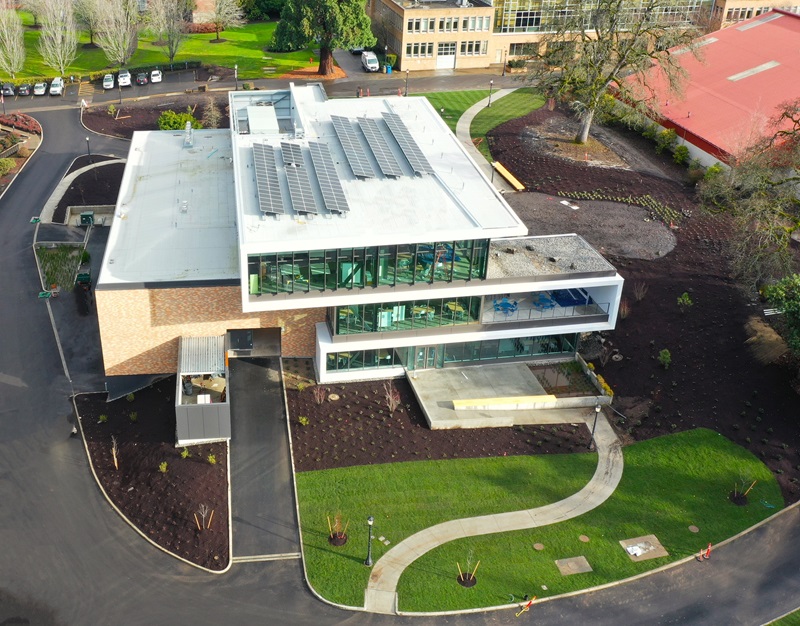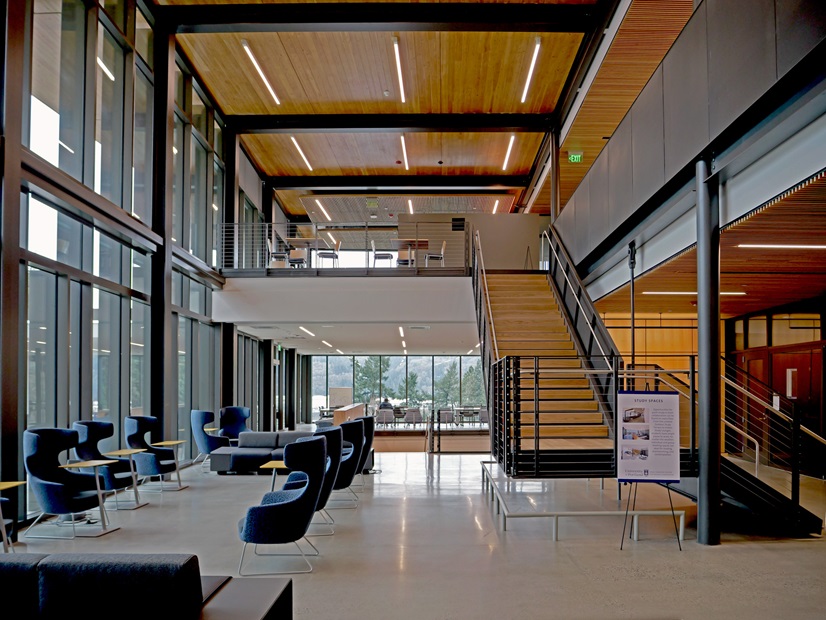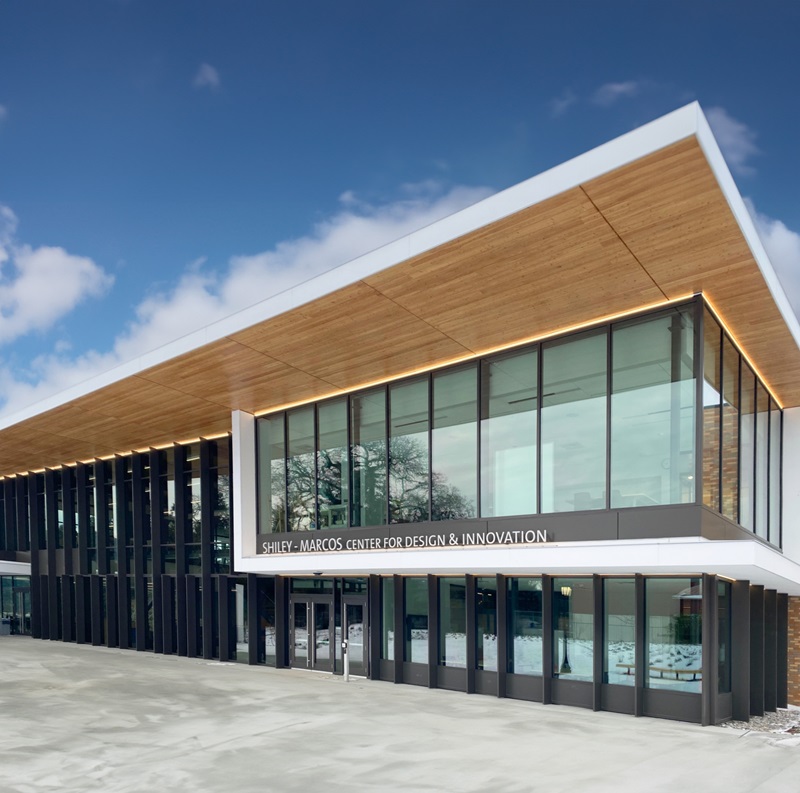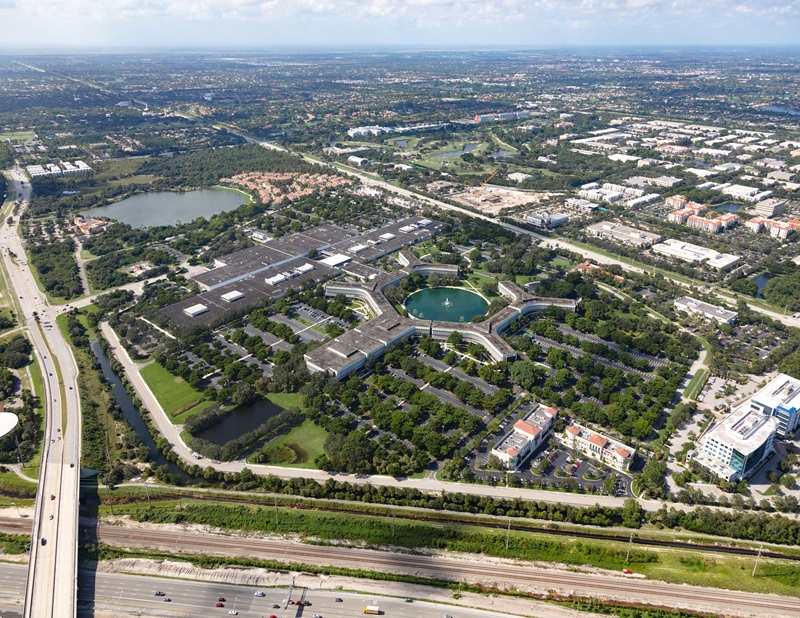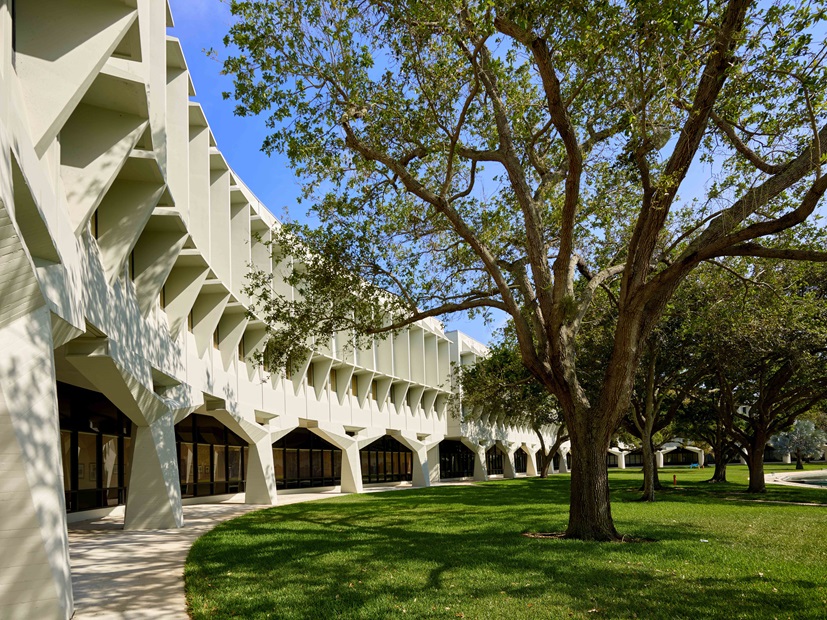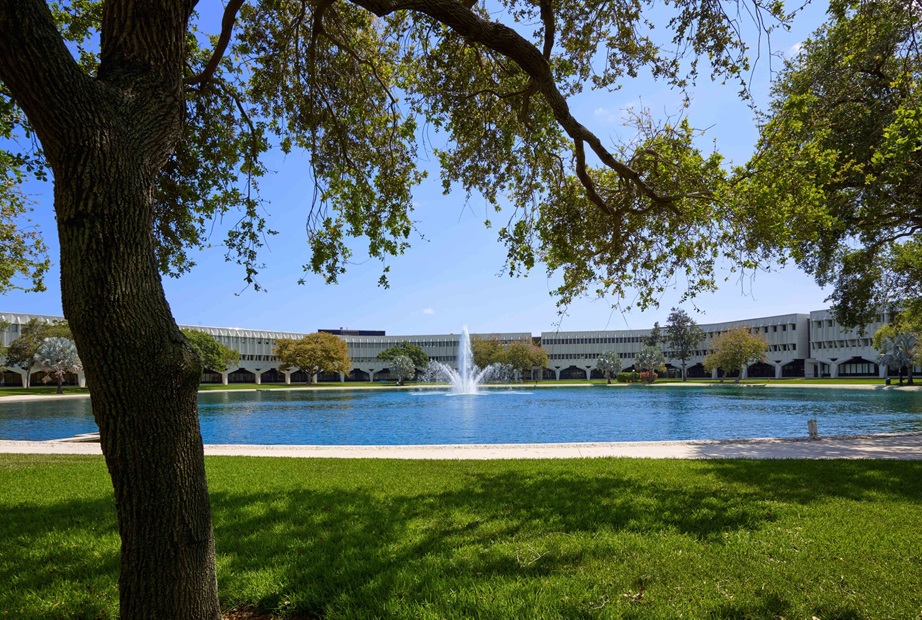Real Estate’s Concrete Answers
While seeking ways to cut the material’s carbon emissions, the industry is also using technology to boost its durability.
Concrete is ubiquitous, used in all sorts of structures around the globe, mainly because it’s affordable and durable. However, nobody would call it “an environmentally friendly construction material.” It actually accounts for 8 percent of the world’s emissions of carbon dioxide. For perspective, the aviation industry accounts for only 2.5 percent.
The main culprit is cement, a component of concrete that acts as a binder to glue sand and stones together. Cement is made of crushed limestone, and this process alone is highly carbon dioxide emitting.
There are many types of concrete, depending on the application—foundation, column, curb, driveway etc. Based on the strength needed, each uses different amounts of cement and there are millions of unique concrete recipes or mix designs available for different applications. A significant carbon reduction could be obtained if it was possible to use less cement in its production, without impacting its durability. And the industry is working on it, making great strides.
Low(er)-carbon concrete? It’s possible.
Construction and development company Skanska uses concrete extensively in its projects. It even has its own concrete company founded in 1887 in Sweden. Obviously, technological advancement is something that the company is keen on, so it’s been deeply involved in concrete’s various applications in construction: from concrete mix design engineering, concrete production and precast manufacturing, to self-performed structural concrete work.
In November 2019, Skanska launched the EC3 tool, which had the greatest impact on concrete than any other material, according to Senior Vice President of Sustainability Steve Clem, due to its outsized carbon impact. Specifically, the tool has helped increase transparency in the supply chain and even driven voluntary reductions in the Global Warming Potential (GWP) of many mix designs, especially in the West.
“The average mix design GWP in the Seattle area reduced by 18 percent in less than a year just by changes to sourcing as a result of one mega-project asking for EC3 data,” Clem noted.
Another company levering technology to reduce concrete’s climate impact is Concrete.ai, a startup that is the result of 10 years of research at UCLA’s Samueli School of Engineering and Applied Science.
“The diversity in concrete formulations arises from the vast options of ingredients, including types of cement, aggregates like rock and sand, as well as chemical admixtures,” explained Alex Hall, CEO of Concrete.ai.
READ ALSO: Is the Rise in Construction Costs Decelerating?
Field testing its AI-driven software, dubbed Concrete Copilot, reduced emissions by 30 percent while cutting costs by $5 per cubic yard. The platform integrates with a producer’s existing supply chains and data, basically eliminating the need for external testing. And while the technology relies on generative AI for precision, it keeps the human experience in the driver’s seat. It uses AI to identify the optimal concrete recipes for any application and allows the producer to refine key criteria and select which recipes to use, while further training the AI to identify similar mixes in the future. Time spent on this process is cut down from weeks to minutes.
“Optimization for a carbon dioxide perspective requires reduction of cement, which generates roughly 90 percent of all concrete’s carbon dioxide emissions,” Hall said. “Reduction today is primarily achieved through substitution by Supplementary Cementitious Materials like fly ash, a byproduct of coal power stations, and slag, a byproduct of steel manufacture.” But the availability of these materials depends on proximity to source, given that every ingredient of concrete is a commodity.
Meanwhile, Clem noted that there are multiple avenues to reduction, including: changing sourcing patterns and methods—such as barging cement instead of trucking—cement reduction and replacement (limestone, slag, glass pozzolans), recycled/special aggregates (brimstone), carbon-capture (carboncure) and other additives like biochar. They all have the ability to make the mix design carbon neutral.
For example, for the Shiley-Marcos project at the University of Portland, Skanska used a type of cement mix that saved the client 25 percent emissions compared to business as usual.
These technological advancements help align with Scope 3 targets—those that target the emissions in the supply chain, those of the customers and suppliers, those (seemingly) without any control over. Or is it?
The real estate industry’s shift toward sustainability targets indicates that as the concrete industry realigns its future to meet these sustainability goals, producers require technologies capable of reducing carbon emissions in existing concrete mixes, while also incorporating new, scalable, sustainable materials. But this is not an easy feat.
Risks and challenges
Because it’s a structural element, concrete is synonymous with “strong, durable,” so keeping it dependable is essential. This means that it’s vital to keep a close eye on initial strength versus ultimate strength.
“The industry is built around testing for 28-day initial strength, which unlocks the ability to perform the next activity on the schedule,” said Clem, adding that some low-carbon concrete strategies cause this to be extended to 56 days, which can jeopardize schedule milestones. That’s why Skanska works with testing agencies to get more data and attempts to make the 56-day cylinder break more common, and currently limits the use of slow mixed to non-schedule critical elements.
Cost is another challenge. The “great idea, how much is it going to cost” phrase is all too common. Most of the carbon reduction strategies cost more than traditional mixes, and not all customers who support the carbon reduction mission are aware of this.
Workability and finishing are other areas that need to be addressed. The former implies that even though the mix design might cost the same, it might be harder for the crews to place and finish, so it might end up costing more after all. The latter means that some architectural applications aren’t suitable for some low-carbon concrete mixes since they cannot be grounded or polished to the desired architectural appearance.
But these challenges aren’t deterring developers who are determined to build with sustainability in mind.
Reducing carbon by recycling
Recycling concrete means reusing its key ingredients: cement, water, chemical additives and aggregates. When a building is demolished, the concrete structure is transported to a facility where it is crushed and broken down into small rocks, sand and aggregate. Instead of ending up in a landfill, these elements are sorted and repurposed for use in new construction streams. Recycling concrete doesn’t just mean giving these materials a second life, it also means reducing waste in landfills and reducing the embodied carbon of new aggregate.
In theory, 100 percent of concrete can be recycled. However, theory differs from practice.
“The challenges arise from potential contamination that occurs during the separation process—where materials like drywall, wood or plumbing fixtures are not adequately removed before demolition, which can result in these materials being combined with concrete,” said Raul Velarde, director of ESG at CP Group. Consequently, the mixture may be rejected at certain facilities and disposed of in landfills.
At Boca Raton Innovation Campus (BRiC), a 1.7 million-square-foot office campus that was recently renovated, CP Group channeled pure concrete slabs from ongoing renovations to be sorted and reused, which reduced the embodied carbon of new aggregate by 40 percent.
The BRiC project is the largest single-office facility in Florida, initially built by modernist architect Marcel Breuer as IBM’s Research and Development headquarters and the birthplace of the first personal computer. CP Group acquired the campus in 2018 and embarked on a $100 million capital improvement program, aiming to turn BRiC into a technology and life sciences hub for the southeastern U.S. Amid these upgrades, more than 480,000 pounds of concrete were recycled in the first phase of the project alone.
“The success of this recycling initiative was possible by implementing a comprehensive plan, but also due to the nature of BRiC’s original structure, which consists of massive concrete slabs that did not contain metal reinforcements and can facilitate a streamlined recycling process,” shared Velarde.
READ ALSO: The Story Behind Florida’s Largest Office Complex
Skanska is also recycling concrete for its projects.
“We work with readymix suppliers to provide washout pans to recycle any concrete waste from new concrete,” Clem said. “We also have projects that use crushed concrete that has been diverted from landfill and used for fill or a base course for roadways or other paving.”
Recycled and green concrete—the eco-friendly version of traditional concrete, which incorporates recycled materials or manufacturing processes and targets the reduction of embodied carbon or cement through modifications to traditional concrete—share the common goal of reducing the environmental impact of concrete production in construction practices. Technology adds a new layer as it enhances concrete formulation through data-driven insights and AI, adapting to changes in material supply and costs.
While the industry is searching for ways to cut concrete’s carbon emissions, it’s also looking to assess and improve the durability and lifespan of concrete. In the end, minimizing the need for frequent repairs and reconstructions also leads to a reduced carbon footprint.

